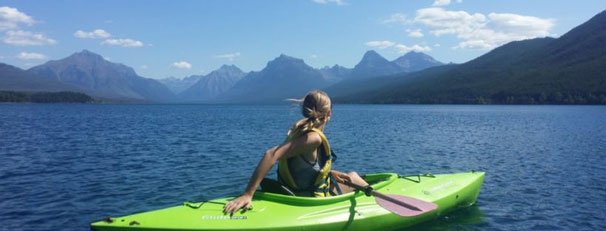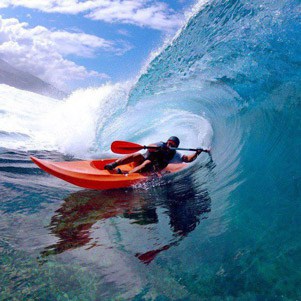Anyone who goes out kayaking a couple of times will come home thinking it is hard work, and their muscles ache.
The reason for this is that paddling a kayak is more about technique. Getting this wrong or not learning it can go a long way to making kayaking for beginners an unforgettable experience.
Although it is not hard, you do need to get the right paddling technique from the beginning.

Much of this starts with choosing the correct kind of paddle for your kayak and your body size. This can affect your kayak paddling techniques for all the different kinds of strokes you need to know.
Here we will look at all you need to know about using the best kayak paddle techniques to improve the on-water experience.
Choosing a Kayak Paddle
A quick guide to paddles is as follows. These range from a narrow kayak up to the wider models.
- Under 5’5” in height, paddle length 210 cm to 240 cm
- 5’5 – 5’11” in height, paddle length 220 cm to 250 cm
- Over 6’ in height, paddle length 220 cm to 260 cm
The longer the paddle, the more powerful kayak strokes you can get, yet it will tire you out quicker.
How to Hold Kayak Paddles
The quickest way to determine the best way of holding the paddle is to put the paddle on your head.
As you grab the paddle shaft, this is the ideal hand position. It does equate to your hands a little wider than shoulder-width and helps to keep a good posture.

How to Paddle Kayaks
Going forward is what you will be doing more than any other direction so that we will begin with this most basic of paddle strokes.
Forward Strokes
This is the first stroke you will learn, and good practice is to paddle in a straight line.
- On one side of your kayak, dip the paddle blade in the water level with your toes
- Drag the blade along the side of your kayak under the water
- When you are level with your hips, you can slice the blade out of the water
- Repeat on the other side
Sweep Stroke
When you are doing the forward stroke, your paddles will remain close to your kayak. The sweep stroke works oppositely.
- Dip the blade in the water, so it is level with your toes
- Drag the paddle backward, but this time use a wide arc (letter C) in the water
- Once you reach the rear of the boat, slide the blade out of the water
The proper technique for doing this is to keep your arm stretched on the side as you make the stroke. The more distance between you and your kayak, the sharper your turn.
A reverse sweep works in the same manner yet in the opposite direction. Dip the blade in the water close to your hips.
Push against the water with the back face of the paddle blades in a large arc and circle toward your feet. (Find the Best Pedal Kayak)
Draw Strokes
If you need to near a dock, the side of a lake, or another person’s kayak, then you will use the draw stroke.
Instead of turning your kayak, it moves it from side to side, depending on which direction you are going.
Spin the paddle shaft in your hand, so the blade is horizontal. It should be a couple of feet from the side of your kayak.
Push the paddle down in the water and drag it toward you using the lower hand.
You must bend the upper arm and keep a relaxed grip on the shaft. Your kayak will move to the side, but be careful not to let the blade touch the boat.
If you try to pull the blade from the water as it touches you, it can lead to capsizing. (Read Boat Numbering)
Spin your paddle by around ninety degrees, and slice the blade from the water while sure it is not touching the kayak.
Reverse Strokes
You will see this is similar to the forward strokes you make to go forward, yet in reverse. You will find it rarely used apart from areas where you are unable to turn around.
You push the blade in the water level with your hips and rotate your torso as you push the blade forward. The reverse stroke should end when the paddle is level with your toes.

Paddle Tips
Paddles come in different types, yet there are some things to know to help you understand what kind of paddle you have.
Asymmetrical blades have one side that is shorter than the other is. While there is no difference in how you can paddle with this type, or with symmetrical blades. It helps to know the type you are using.
You will also see that bladed are concaved, this curve delivers more force to the water, and thus delivering a more powerful stroke.
When you pick up your paddles, you want your knuckles facing upwards. The blades will be perpendicular to the water (edge down).
Shorter sides of the blades will be on the bottom of the paddle, and the concave curve will be facing you.
If you are not following this, and the paddle is in the wrong position, it will not lead to efficient paddling.
Once you improve your technique, you need to start focusing on your core muscles. Rather than tiring out your arms, it uses the power of the much large back muscles to drive you through the water more efficiently without tiring you.
You tend to find; efficient paddling means you do not feel suffocated by your life jacket as if you were using your arms and have a lack of movement.
Find the right Kayak for your needs with our best kayak guide.





